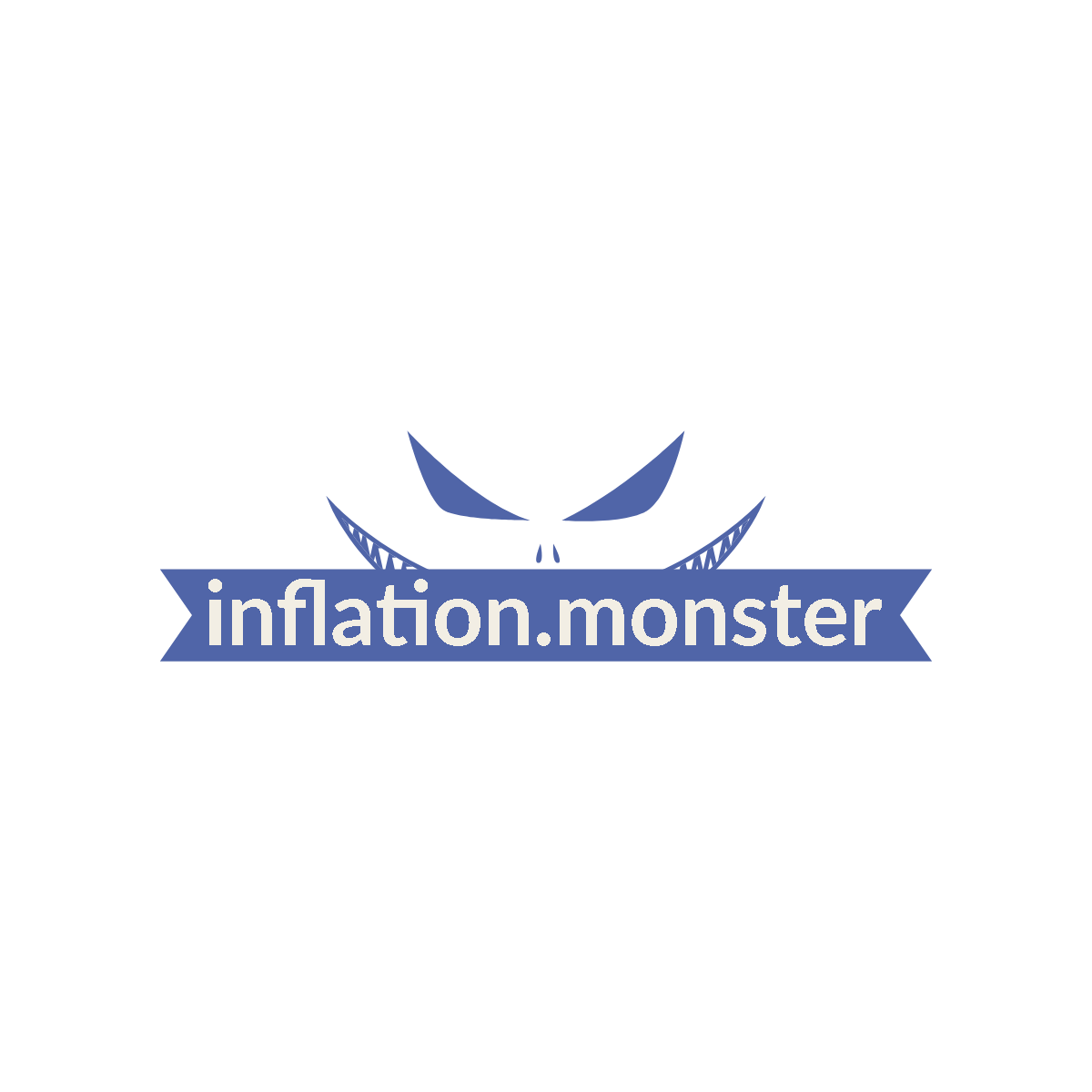Inflation is a financial monster that lurks in the shadows, often invisible to the naked eye but with the power to wreak havoc on businesses and investments alike. Here at Inflation.Monster, we are dedicated to shedding light on this mysterious force and its impact on the world of money and economics. Dive deep into the realm of hard money, explore the complexities of inflation, and discover how businesses are affected by this formidable monster. From skyrocketing prices to uncertain returns, the impact on business investment is profound and often underestimated. Join us as we unravel the intricacies of inflation and equip you with the knowledge to navigate the financial landscape with confidence.

Inflation and Business Investment
Inflation is a term that is often thrown around in financial discussions, but what does it really mean? Simply put, inflation refers to the sustained increase in the general price level of goods and services in an economy over a period of time. This means that over time, the purchasing power of money decreases and it takes more of it to buy the same goods and services. Understanding the causes and types of inflation is crucial in assessing its impact on business investment.
Definition of Inflation
Inflation can be defined as an increase in the average level of prices of goods and services over a specific period of time. This means that as inflation occurs, the purchasing power of money declines. For example, if the inflation rate is 2%, it means that on average, the prices of goods and services have increased by 2% compared to the previous year.
Causes of Inflation
Various factors contribute to the occurrence of inflation. One of the primary causes of inflation is the increase in the money supply in an economy. When there is more money circulating in the economy, it can lead to an increase in consumer spending and demand, which in turn drives up prices. Other factors that can cause inflation include rising energy and raw material costs, wage pressures, government policies, and changes in exchange rates.
Types of Inflation
Inflation can be classified into different types based on its causes and intensity. The most common types of inflation include demand-pull inflation, cost-push inflation, and built-in inflation. Demand-pull inflation occurs when aggregate demand exceeds the supply of goods and services, leading to an increase in prices. Cost-push inflation, on the other hand, occurs when the cost of production increases, such as higher wages or raw material costs, which is then passed on to consumers through higher prices. Built-in inflation refers to the tendency of workers to demand higher wages to keep up with increasing prices, thus perpetuating inflationary pressures.
The Relationship Between Inflation and Business Investment
Inflation has a significant impact on business investment, and understanding this relationship is crucial for businesses to make informed decisions. When inflation is high, it can lead to volatility in the economy, making businesses hesitant to invest. On the other hand, when inflation is low, businesses may perceive it as a sign of stability, encouraging investment. The relationship between inflation and business investment is multifaceted, with both positive and negative effects.
Negative Effects of Inflation on Business Investment
One of the negative effects of inflation on business investment is decreased purchasing power. As prices rise, consumers have less disposable income, which can lead to reduced demand for goods and services. This can have a direct impact on businesses, leading to lower sales and profits, and ultimately affecting their investment decisions.
Uncertainty and risk are also factors that can deter businesses from making investments in an inflationary environment. Unpredictable inflation can make it difficult for businesses to forecast future costs and revenues, leading to uncertainty in their investment decisions. Additionally, inflation can increase the cost of capital for businesses, as interest rates may rise to combat inflation. Higher borrowing costs can discourage businesses from taking on new projects or expanding existing operations.
Furthermore, inflation can reduce consumer demand, as individuals may postpone purchases in anticipation of further price increases. This decrease in consumer demand can have a ripple effect on businesses across various industries, leading to a decline in investment and economic growth.
Positive Effects of Inflation on Business Investment
While inflation is generally viewed as detrimental to businesses, there are also some potential positive effects on business investment. One of these is increased profitability. In an inflationary environment, businesses that can effectively manage and pass on cost increases to consumers may see an increase in their profit margins. This increased profitability can provide businesses with the financial resources to invest in new projects, expand operations, or enhance their competitiveness in the market.
Expansionary monetary policy can also have a positive impact on business investment during times of inflation. Central banks may use monetary policy tools, such as lowering interest rates or implementing quantitative easing, to stimulate economic growth in an inflationary environment. These measures can make borrowing cheaper for businesses, reducing the cost of capital and encouraging investment.
Inflation can also lead to a reallocation of resources within the economy. As prices rise, businesses may shift their focus and investment towards sectors or industries that are experiencing higher demand or have better prospects for profitability. This reallocation of resources can drive innovation, increase productivity, and contribute to long-term economic growth.

Inflation’s Impact on Business Investment Decision-Making
When making investment decisions, businesses operating in an inflationary environment need to consider various factors to mitigate the impact of inflation on their investments. These factors include the cost of borrowing, expected inflation rate, pricing strategies, and the competitive landscape.
Cost of borrowing
Inflation can affect the cost of borrowing for businesses. As inflation rises, interest rates tend to increase, making borrowing more expensive. When considering potential investments, businesses need to assess the cost of borrowing and factor it into their financial projections to ensure that the returns on the investment outweigh the borrowing costs.
Expected inflation rate
Businesses also need to consider the expected inflation rate when making investment decisions. Forecasting inflation can be challenging, but having an understanding of future inflation trends is crucial for businesses to assess the potential impact on their costs and revenues. Businesses may need to adjust their pricing strategies, production techniques, and supply chain management to mitigate the effects of inflation.
Pricing strategies
In an inflationary environment, businesses need to carefully consider their pricing strategies. They may need to increase prices to cover rising costs, but striking the right balance is crucial to avoid losing customers. Businesses may need to implement pricing strategies that account for inflation while remaining competitive in the market.
Competitive landscape
The competitive landscape is another key consideration for businesses in an inflationary environment. Increased prices due to inflation may present opportunities for businesses to gain a competitive advantage by offering more value or innovative solutions. Understanding market dynamics and consumer preferences can help businesses identify areas of potential growth and make strategic investment decisions.
Strategies to Mitigate Inflation’s Impact on Business Investment
To mitigate the impact of inflation on business investment, companies can implement various strategies. These strategies include diversification of investments, hedging against inflation, revising pricing strategies, efficiency improvements, and monitoring economic indicators.
Diversification of investments
Diversifying investments can help businesses minimize the potential risks associated with inflation. By investing in a range of assets, businesses can spread their risk and potentially offset the negative impact of inflation on specific sectors or industries. Diversification allows businesses to capture opportunities in different market conditions and hedge against the volatility caused by inflation.
Hedging against inflation
Businesses can hedge against inflation by entering into contracts or purchasing assets that are directly or indirectly linked to inflation. For example, businesses can invest in commodities or real estate, which tend to have a positive correlation with inflation. By having assets that can maintain or increase their value in an inflationary environment, businesses can protect their purchasing power and mitigate the effects of inflation on their investment returns.
Revising pricing strategies
To navigate an inflationary environment, businesses may need to revise their pricing strategies. They may need to evaluate their pricing models, assess cost structures, and consider alternative pricing mechanisms to maintain profitability. This may involve passing on cost increases to consumers, implementing value-added pricing strategies, or exploring pricing flexibility to remain competitive in the market.
Efficiency improvements
Improving efficiency and productivity can help businesses mitigate the negative effects of inflation on their investments. By optimizing operations, streamlining processes, and investing in technology, businesses can reduce costs and enhance their competitiveness. Efficiency improvements can also help businesses maintain profit margins and offset the impact of rising costs due to inflation.
Monitoring economic indicators
Monitoring economic indicators is essential for businesses to stay informed about inflation trends and make informed investment decisions. Key economic indicators to monitor include inflation rates, interest rates, GDP growth, and consumer spending patterns. By staying updated on these indicators, businesses can identify potential risks and opportunities and adjust their investment strategies accordingly.

Case Studies on Inflation and Business Investment
To further understand the impact of inflation on business investment, let’s take a look at two case studies.
Case Study 1: Retail Sector
In an inflationary environment, businesses in the retail sector face numerous challenges. Rising costs of goods and services, coupled with reduced consumer purchasing power, can lead to lower sales and profitability. However, businesses with strong pricing strategies, efficient operations, and a focus on consumer demand can still thrive. By closely monitoring consumer preferences, implementing targeted marketing strategies, and offering value-added products and services, retail businesses can overcome the negative effects of inflation on their investment decisions.
Case Study 2: Manufacturing Industry
The manufacturing industry is highly sensitive to inflationary pressures. Rising costs of raw materials, transportation, and labor can significantly impact profit margins. To mitigate the impact of inflation, manufacturing businesses can look for cost-saving opportunities, such as optimizing supply chains, negotiating favorable contracts with suppliers, or investing in automation. Additionally, diversifying customer bases and exploring new markets can help manufacturing businesses adapt to changing inflationary environments and maintain sustainable growth.
Long-Term Considerations for Businesses
Inflation forecasting and planning are crucial for businesses to navigate the ever-changing economic landscape. By analyzing historical data, tracking economic indicators, and consulting experts, businesses can develop strategies to anticipate and respond to future inflationary pressures. Long-term considerations also include adapting to changing inflationary environments and carefully aligning investment strategies with prevailing economic conditions.
Businesses should also assess the impact of inflation on their investment strategies. Depending on the level and nature of inflation, businesses may need to adjust their investment portfolios, seek opportunities in different sectors or regions, or adopt strategies that capitalize on inflationary trends. It is essential for businesses to have a comprehensive understanding of inflation and its implications to make informed investment decisions.
In conclusion, inflation has a significant impact on business investment. While inflation can present challenges, such as decreased purchasing power and increased costs, it can also create opportunities for increased profitability and reallocation of resources. By considering factors such as borrowing costs, inflation expectations, pricing strategies, and the competitive landscape, businesses can mitigate the impact of inflation on their investments. Implementing strategies such as diversification, hedging, revising pricing, efficiency improvements, and monitoring economic indicators can help businesses navigate inflationary environments and make informed investment decisions.




